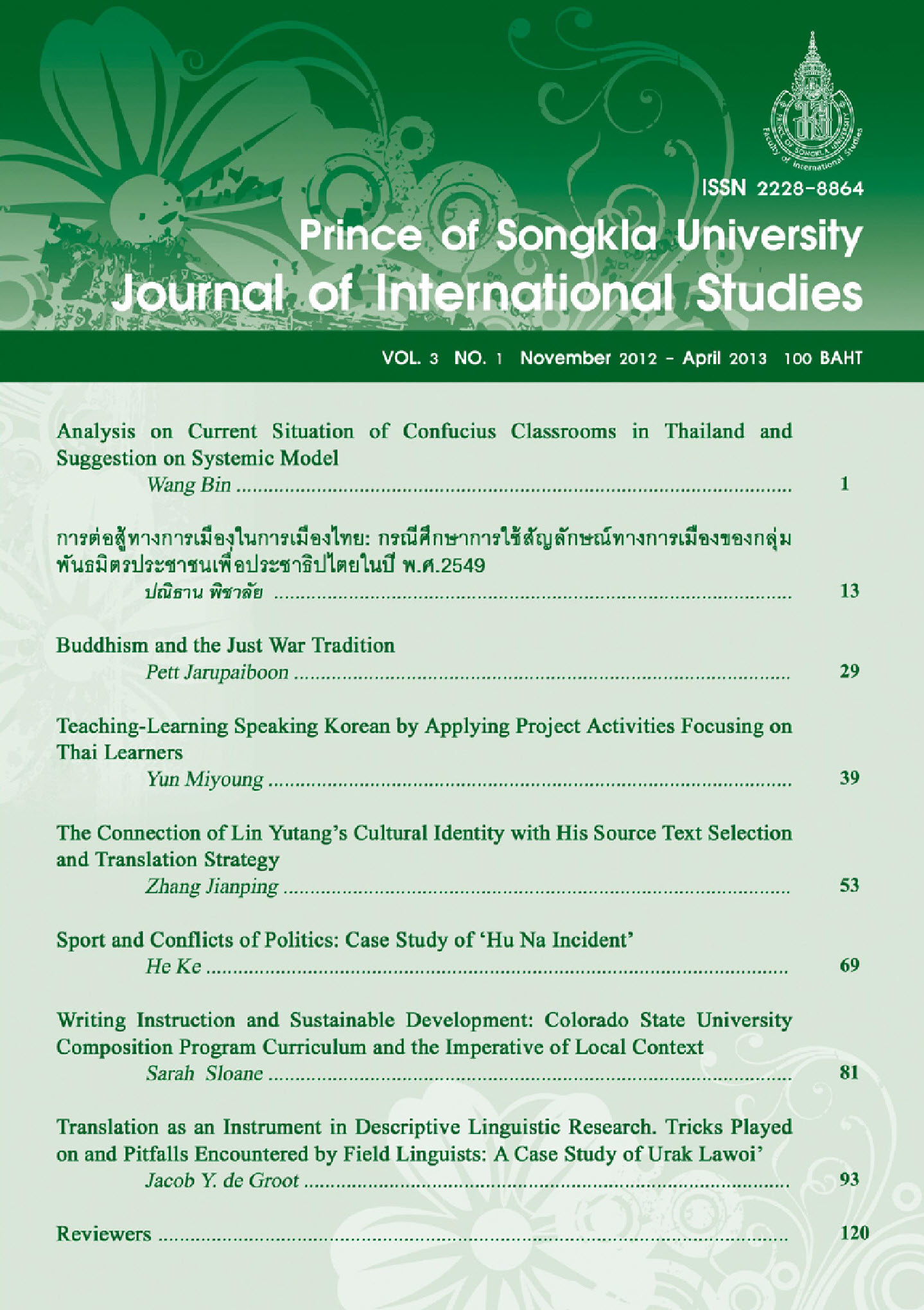Writing Instruction and Sustainable Development: Colorado State University Composition Program Curriculum and the Imperative of Local Context
Main Article Content
Abstract
This article discusses how the Colorado State University Composition Program developed a rhetorically-based curriculum that teaches principles of sustainable development at the same time as it offers basic writing instruction. Two United Nations initiatives-the Decade of Literacy and the Decade of Education for Sustainable Development-overlapped in 2005-2012 and highlighted the need for writing curriculum and instruction to focus on sustainable development. A curriculum entitled "The Rhetoric of Green" is Colorado State University's response to the United Nations' initiatives, a response that likewise recognizes the importance of being sensitive to local contexts in curriculum design and teaching practices. Offering a thorough description of the Colorado State University curriculum, the article illustrates one way of heeding the admonitions of Jaya Graves (2002), Konai Helu Thaman (2010), Debby Cotton, Ian Baily, Martyn Warren and Susie Bissell (2009), to respect local contexts and use interdisciplinary teaching approaches to afford change in the area of sustainable development.
Article Details
Statements and opinions expressed in articles herein are those of the authors and do not necessarily reflect the position of the editors or publisher.
Article, information, text, image, etc. which are published in Journal of International Studies, belong to Journal of International Studies. If anybody or any organization would like to use part or whole of them, they must receive written permission from Journal of International Studies before usage.
References
Cotton, D., Bailey, I., Warren, M., & Bissell, S. (2009). Revolutions and second-best solutions: Education for sustainable development in higher education. Studies in Higher Education, 34(7), 719-733.
Graves, J. (2002). Developing a global dimension in the curriculum. Curriculum Journal, 13(3), 303-311. doi: 10.1080/0958517022000014682
Jiogitt, D., Haigh, M., & Chalkley, B. (2005). Towards the UN Decade of Education for Sustainable Development: Introduction. Journal of Geography in Higher Education, 29(1), 13-17. doi: 10.1080/03098260500030272
johnson-Sheehan, R., & Morgan, L. (2009). Conservation Writing: An Emerging Field in Technical Communication, Technical Communication Quarterly, 18(1), 9-27. doi: 10.1080/10572250802437283
Pigozzi, M. J. (2010). Implementing the UN Decade of Education for Sustainable Development (DESD): Achievements, open questions and strategies for the way forward. International Review of Education, 56(2-3), 255-269. doi: 10.1007/s11159-010-9163-y
Programme design & delivery. (n.d.). UNESCO Education. Retrieved December 2, 2012, from http://www.unesco.org/new/en/education/themes/education-building-blocks/ literacy/programme-design-delivery/
Selby, D. (2006). The firm and shaky ground of education for sustainable development. Journal of Geography in Higher Education, 30(2), 351-365. doi: 10.1080/ T 03098260600717471
Thaman, K. H. (2010). Teacher capacities for working towards peace and sustainable development. International Journal of Sustainability in Higher Education, 11(4),
353-364. doi: 10.1108/14676371011077577
United National General Assembly, 66th session. (2012, September 11). Resolution adopted by the General Assembly A/RES/66/288. The future we want. UN News Center. Retrieved December 2, 2012, from http://www.un.org/ga/search/view_doc.asp?symbol=A/RES/66/288 United Nations. (20-22 June 2012) Report of the United Nations Conference on Sustainable Development. Rio de Janeiro, Brazil,,


